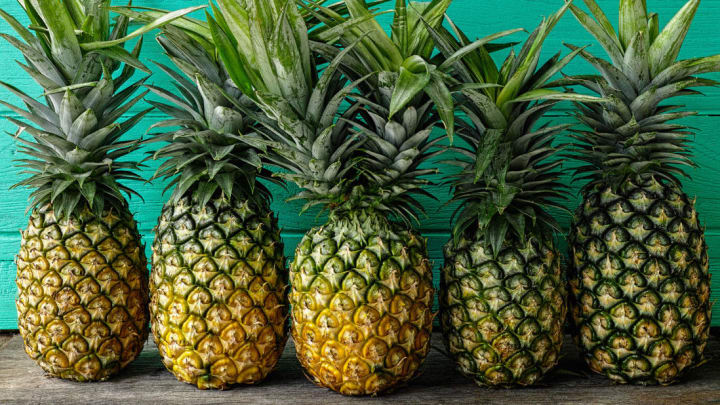by James Hunt
Ask an English-speaking person whether they've heard of a pineapple, and you'll probably receive little more than a puzzled look. Surely, every schoolchild has heard of this distinctive tropical fruit—if not in its capacity as produce, then as a dessert ring, or smoothie ingredient, or essential component of a Hawaiian pizza.
But ask an English-speaking person if they've ever heard of the ananas fruit and you'll probably get similarly puzzled looks, but for the opposite reason. The average English speaker has no clue what an ananas is—even though it's the name given to the pineapple in almost every other major global language.
In Arabic, German, French, Dutch, Greek, Hebrew, Hindi, Swedish, Turkish—even in Latin and Esperanto—the pineapple is known as an ananas, give or take local variations in the alphabet and accents. In the languages where it isn't, it's often because the word has been imported from English, such as in the case of the Japanese パイナップル (painappuru) and the Welsh pinafel.
So how is it that English managed to pick the wrong side in this fight so spectacularly? Would not a pineapple, by any other name, taste as weird and tingly?
To figure out where things went wrong for English as a language, we have to go back and look at how Europeans first encountered the fruit in question, which is native to South America. It was first catalogued by Columbus's expedition to Guadeloupe in 1493, and they called it piña de Indes, meaning "pine of the Indians"—not because the plant resembled a pine tree (it doesn't) but because they thought the fruit looked like a pine cone (umm, ... it still doesn't. But you can sort of see it.)
Columbus was on a Spanish mission and, dutifully, the Spanish still use the shortened form piñas to describe the fruit. But almost every other European language (including Portuguese, Columbus's native tongue) decided to stick with the name given to the fruit by the indigenous Tupí people of South America: ananas, which means "excellent fruit."
According to etymological sources, the English word pineapple was first applied to the fruit in 1664, but that didn't end the great pineapple versus ananas debate. Even as late as the 19th century, there are examples of both forms in concurrent use within the English language; for example, in the title of Thomas Baldwin's Short Practical Directions For The Culture Of The Ananas; Or Pine Apple Plant, which was published in 1813.
So given that we knew what both words meant, why didn't English speakers just let go of this illogical and unhelpful linguistic distinction? The ultimate reason may be: We just think our own language is better than everyone else's.
You see, pineapple was already an English word before it was applied to the fruit. First used in 1398, it was originally used to describe what we now call pine cones. Hilariously, the term pine cones wasn't recorded until 1694, suggesting that the application of pineapple to the ananas fruit probably meant that people had to find an alternative to avoid confusion. And while ananas hung around on the periphery of the language for a time, when given a choice between using a local word and a foreign, imported one, the English went with the former so often that the latter essentially died out.
Of course, it's not too late to change our minds. If you want to ask for ananas the next time you order a pizza, give it a try (though we can't say what you'd up with as a result).
Have you got a Big Question you'd like us to answer? If so, let us know by emailing us at bigquestions@mentalfloss.com.
